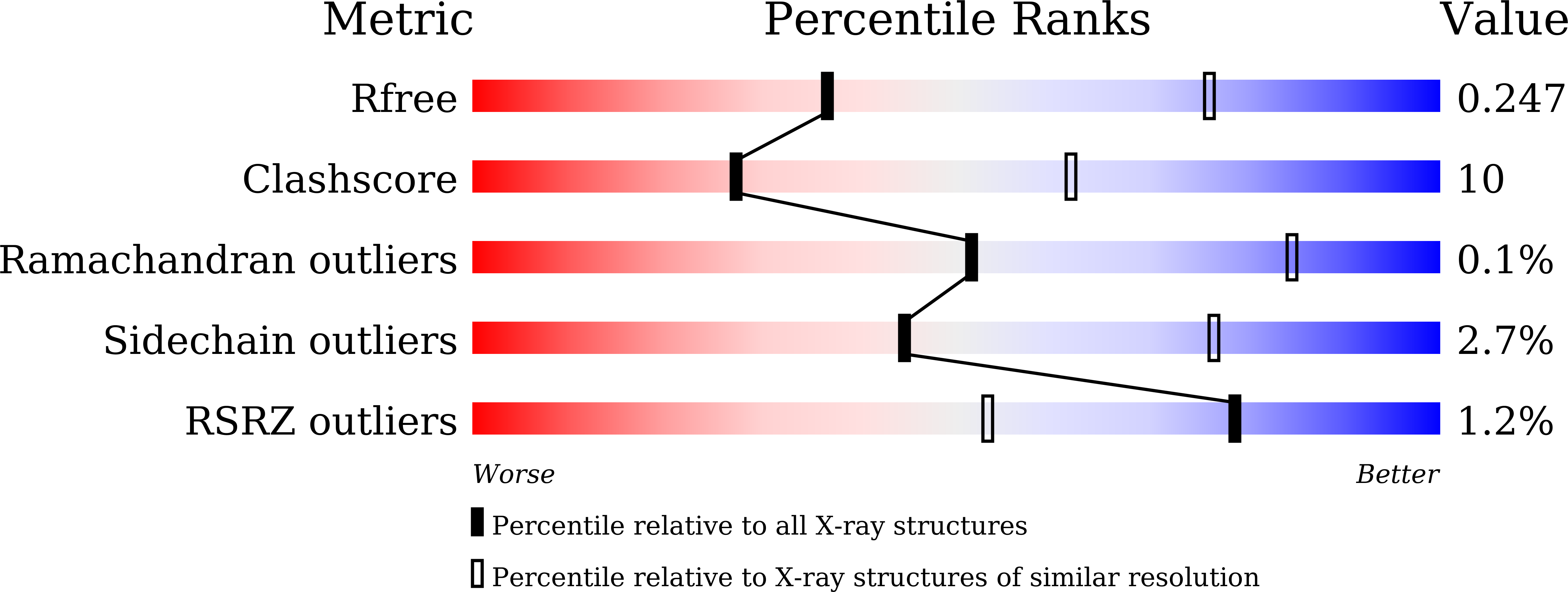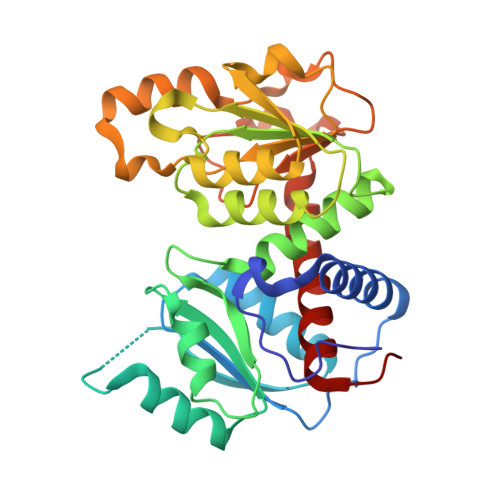New regulatory mechanism-based inhibitors of aspartate transcarbamoylase for potential anticancer drug development.
Lei, Z., Wang, B., Lu, Z., Wang, N., Tan, H., Zheng, J., Jia, Z.(2020) FEBS J 287: 3579-3599
- PubMed: 31967710
- DOI: https://doi.org/10.1111/febs.15220
- Primary Citation of Related Structures:
6KJ7, 6KJ8, 6KJ9, 6KJA - PubMed Abstract:
Aspartate transcarbamoylase (ATCase) is a key enzyme which regulates and catalyzes the second step of de novo pyrimidine synthesis in all organisms. Escherichia coli ATCase is a prototypic enzyme regulated by both product feedback and substrate cooperativity, whereas human ATCase is a potential anticancer target. Through structural and biochemical analyses, we revealed that R167/130's loop region in ATCase serves as a gatekeeper for the active site, playing a new and unappreciated regulatory role in the catalytic cycle of ATCase. Based on virtual compound screening simultaneously targeting the new regulatory region and active site of human ATCase, two compounds were identified to exhibit strong inhibition of ATCase activity, proliferation of multiple cancer cell lines, and growth of xenograft tumors. Our work has not only revealed a previously unknown regulatory region of ATCase that helps uncover the catalytic and regulatory mechanism of ATCase, but also successfully guided the identification of new ATCase inhibitors for anticancer drug development using a dual-targeting strategy. DATABASE: Structure data are available in Protein Data Bank under the accession numbers: 6KJ7 (G166P ecATCase), 6KJ8 (G166P ecATCase-holo), 6KJ9 (G128/130A ecATCase), and 6KJA (G128/130A ecATCase-holo).
Organizational Affiliation:
College of Chemistry, Beijing Normal University, China.
















